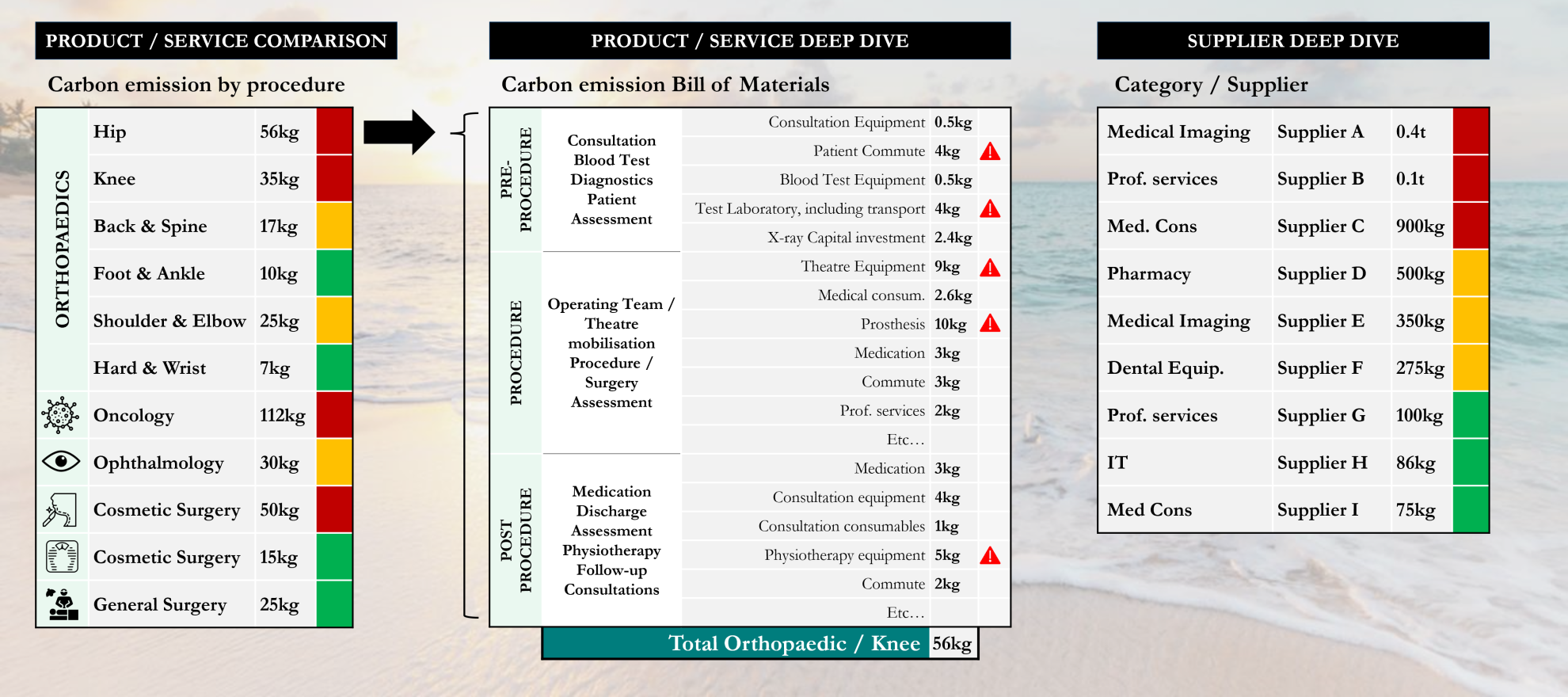
- This fictive hospital offer different type of services to its patients, from general surgery to orthopaedics, ophthalmology, etc.
- Our assessment allows this hospital to assess, for each of the service offered, the total amount of carbon emissions generated each time a procedure is conducted, for example a hip surgery generates 56kg of carbon emission (Scope 3 – supply base)
- It then allows the hospital to identify which treatment to focus on to reduce emissions and make a substantial sustainability impact, in this example hips and knees orthopaedics are highlighted in red as big contributor to the total emission
- As we identify services or products with high carbon emissions, we can then deep dive to identify where exactly in the process, emissions are the highest
- This could be a deep dive into the production process or In our example, we define the patient journey to hip surgery, from first appointment to last session of physiotherapy post operation
- Our fictive illustration shows that we need to look at patient commute, work with our lab partner our theatre equipment and the knee prosthesis to make an impact
- We also aggregate emission assessment at supplier level to identify suppliers with the highest reduction opportunities, compare similar supplier, define the reduction strategy and engage with your partner to achieve your sustainability target
